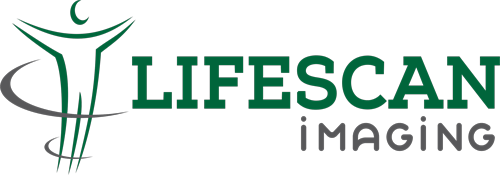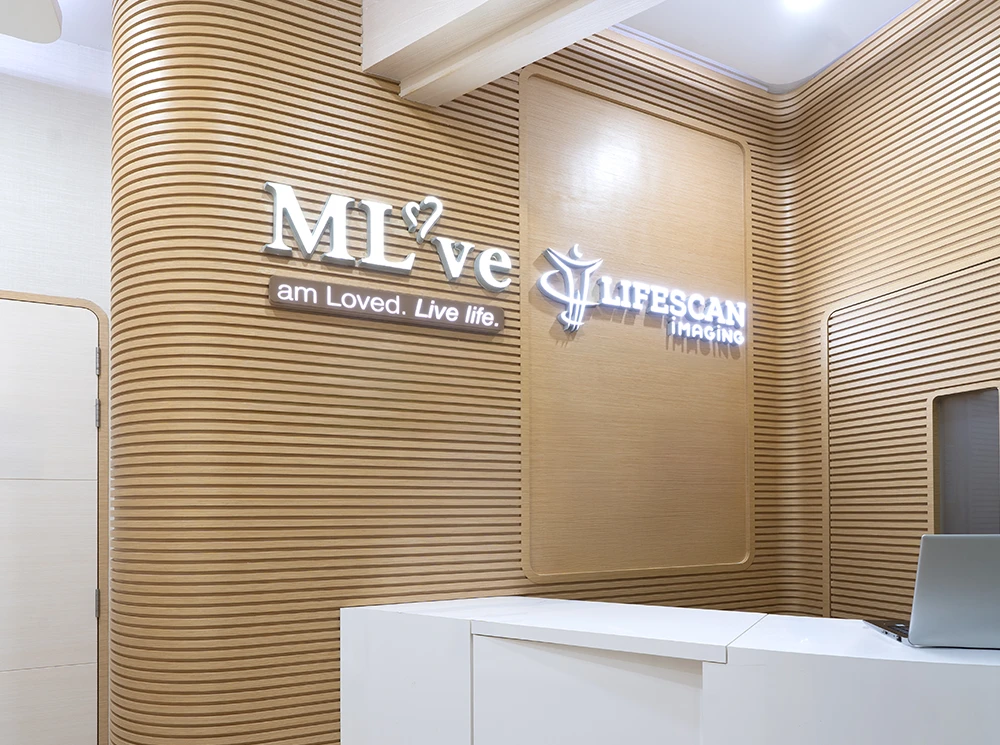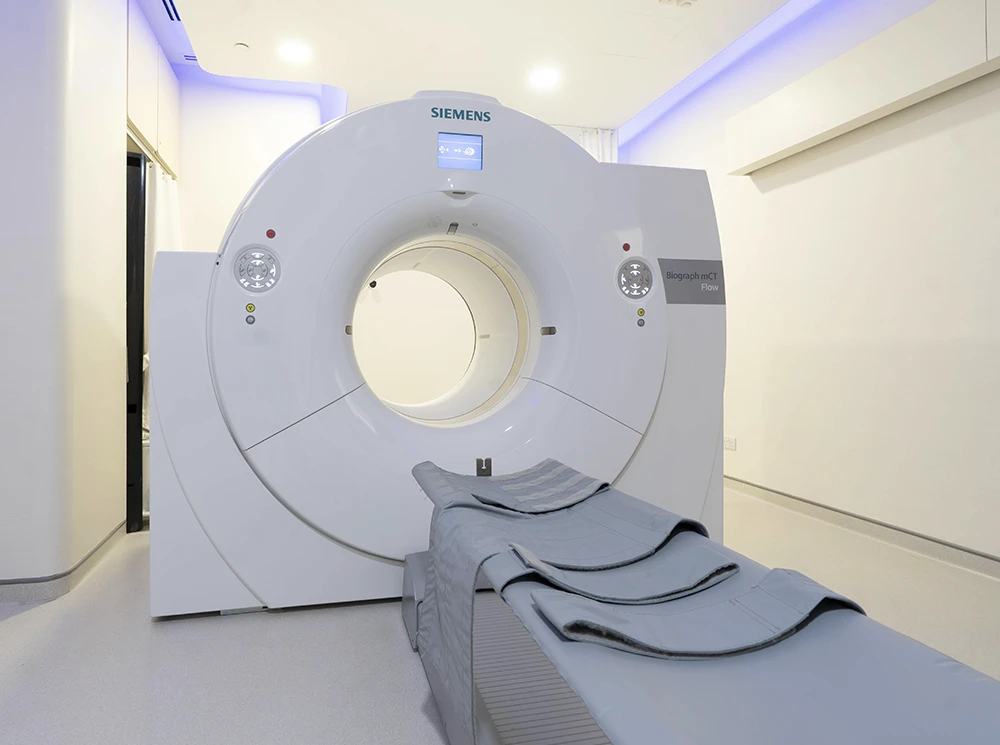
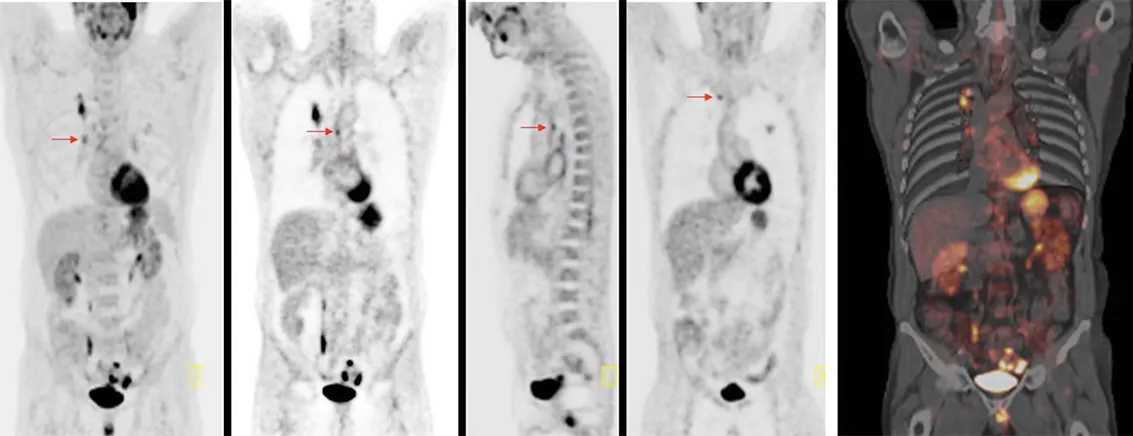
Positron Emission Tomography
What is Positron Emission Tomography?
PET/CT combines Positron Emission Tomography and Computed Tomography to provide detailed images of body organs and metabolic processes. A radioactive tracer is injected, emitting gamma rays detected by the scanner. Computer analysis then creates 3D images of tracer concentration, tailored to specific imaging needs.
Different ligands are used for different imaging purposes depending on what is being imaged. Three-dimensional images of the tracer concentration inside the body are then reconstructed by computer analysis.
What is a PET Scan used for?
PET scans are used to assess organs and tissues for signs of disease or abnormalities, identify its character and extent, and monitor its progress. They can also evaluate the function of organs, such as the heart or brain. Most commonly, PET scans are utilized for cancer detection and monitoring the effectiveness of cancer treatments.
Our Equipment for PET Scan
We use the Siemens Biograph scanner, one of the industry’s finest volumetric PET resolution, providing precise tumor contouring for more accurate treatment planning for patient-specific dose escalation, as well as improving therapy planning and monitoring.
The PET Experience
EASE AND COMFORT
Aligning with priority for patients’ holistic care experience, our PET/CT imaging platform with inherently larger opening of the gantry as well as quieter operation accentuate patients’ ease and comfort.
METICULOUS PERFORMANCE
Meticulous to the finest of details, it deploys a unique PET/CT continuous flow technology with scanning protocols customizable to specific organ of interest, yielding precise images of refined resolution, enhancing definitive diagnostic performance.
LOW DOSE, HIGH EFFICIENCY
An advocate of patient safety, choice of PET/CT technology requires traces of radioactive biomarkers as low as reasonably achievable (ALARA) without compromising imaging quality and efficiency.
VERACIOUS ASSESSMENT
With evolution of the advanced PET/CT hybrid technology, precise and reproducible quantifications of imaging enable identification of disease traits and developments even at early stage, facilitating physicians’ veracious assessment and diagnostic confidence in formulating effective treatment regimes.
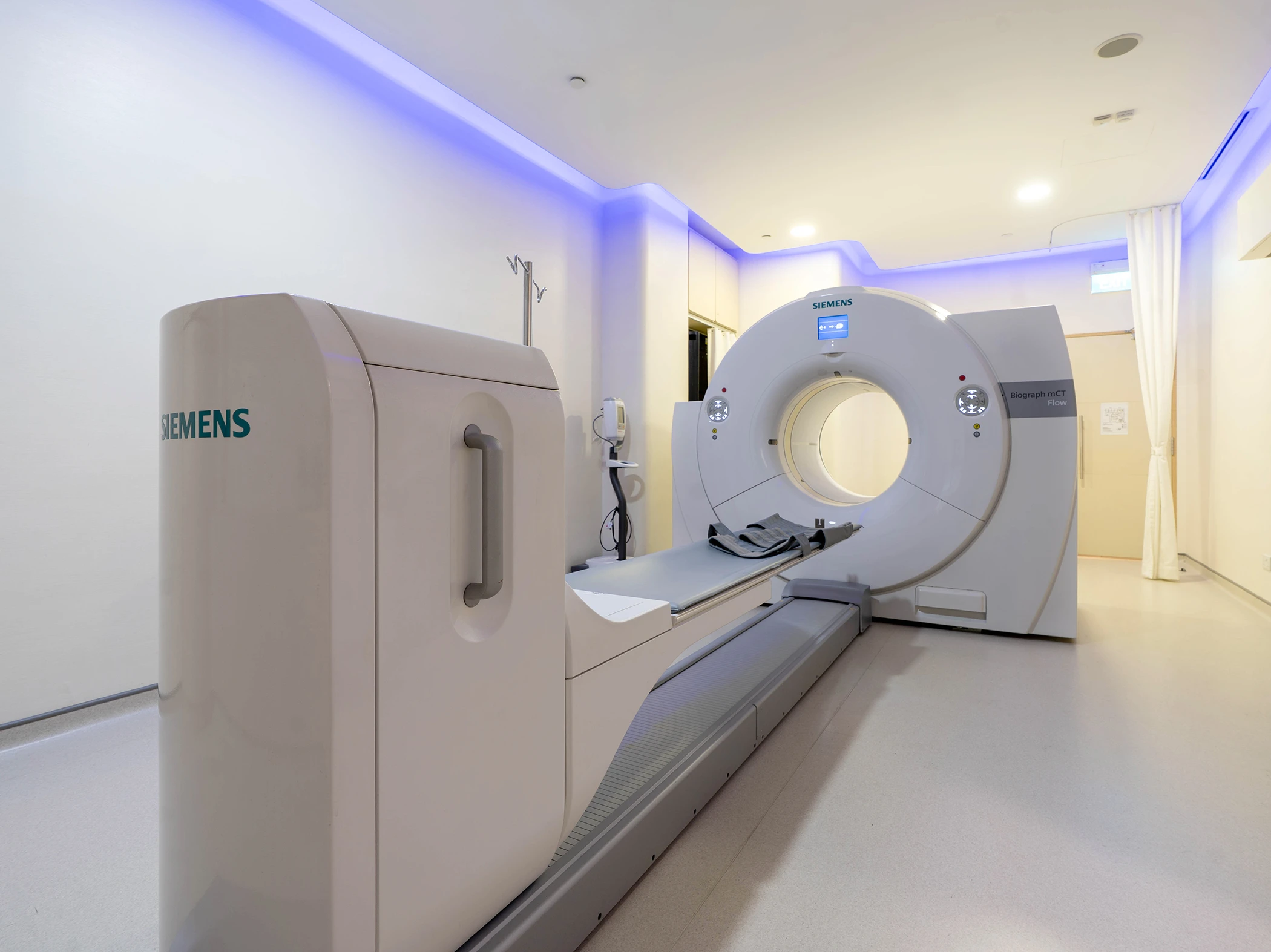
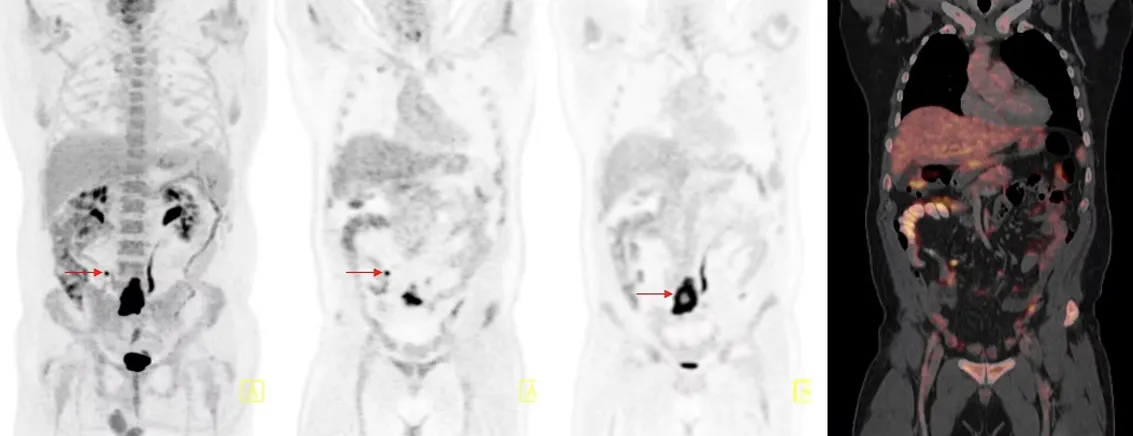
How do you prepare for your appointment?
PET / CT Scan
- For FDG scan, please do not eat or drink (except plain water) 4 hours prior to the appointment. For PSMA/DOTANOC scan, no fasting is required.
- You may continue taking your prescribed medications unless advised otherwise. Avoid vitamins.
Contrast Media
- Please do not eat or drink (except plain water) 4 hours prior to the appointment.
- For asthmatic patients – please take oral Prednisolone (30mg) between 2 and 12 hours before the scan. Prednisolone can be obtained at the clinic if required.
- If you are on Metformin, please stop taking it on the day of the scan, and up to 48 hours after the procedure.
Others
- Keep hydrated and drink about 6-8 glasses of plain water on the day of and after the appointment.
- Wear comfortable clothing on the day of the scan.
- Leave valuables like jewelry at home. You will be required to remove them for the scan.
- Bring your NRIC, recent radiological films, CDs/DVDs, or biopsy results with you.
- Avoid strenuous exercise for 2 days before the scan, as intense physical activity can alter glucose distribution in the body and impact scan results.
- Inform our staff if you have allergies, diabetes, or if you are pregnant or breastfeeding.
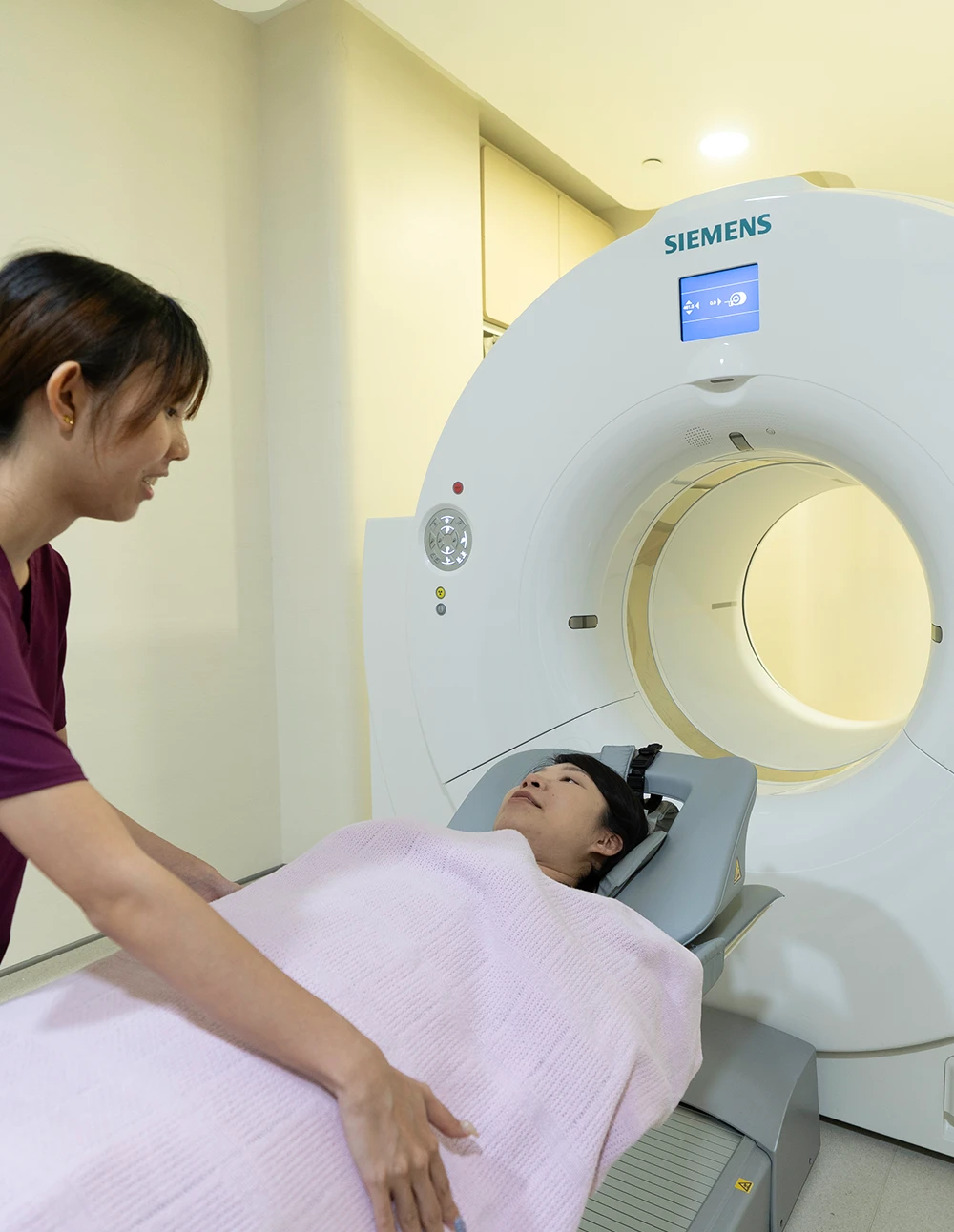
During the Scan
- The entire process takes about 3–4 hours, though the actual scan lasts approximately 30–40 minutes (unless additional imaging is required).
- You will be required to change into a hospital gown, and a locker will be provided for your personal belongings.
- A small amount of radioactive tracer will be injected into a vein in your hand or elbow. This is safe and has no significant side effects.
- After the injection, you’ll rest for 60–90 minutes to allow the tracer to spread through your body.
- Avoid movement during the scan as it can interfere with the results. The scan is completely painless.
After the Scan
- You can resume your normal diet immediately.
- Your scan results will be processed and typically ready within 24–48 hours.
Special Arrangements
- If patient is on a wheelchair / trolley, please come with:
- Accompanying staff nurse familiar with patients’ medical background
- PATSLIDE should be prepared for patients on trolley
- Existing IV line / cannula, if any
- Urine bag, where applicable, should be emptied
- Parking for ambulances are available at Level B2 carpark.
- For patient that requires oxygen support, please ensure adequate supply for the procedure that last about 2-3 hours.
- Urinal / bedpan / extra diapers when necessary for toileting care.
- Breastfeeding patients – Please bank at least one feed of milk and to consider one natural feed (if possible) prior to appointment.
- Patients under age 21 – please have a guardian accompanying you, except NSFs.
